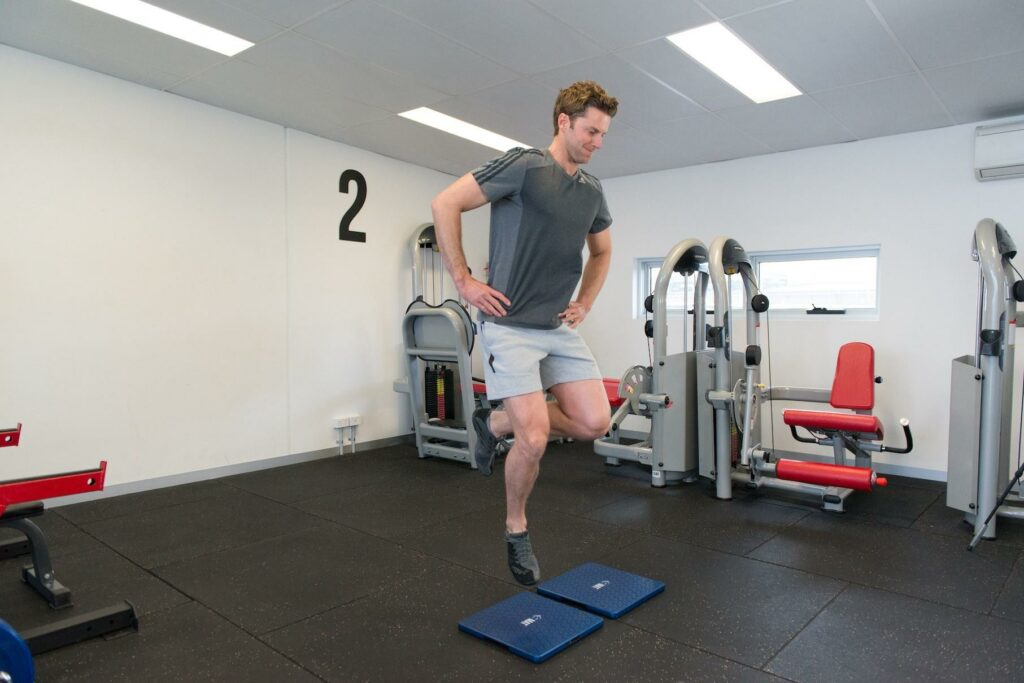When it comes to managing your athletes’ performance, it’s important to remember that not all jumps are created equal. Each jump type places different demands on the body, requiring varied levels of strength, speed, coordination, and tissue tolerance. That’s why it’s essential to assess the full spectrum of jumps—ranging from slow, low-force movements to fast, high-force challenges—when monitoring and optimizing athlete performance.
By leveraging smart force plates, like AxIT Stomp-IT, you can gain deeper insights into how well your athletes perform across this jump continuum. These advanced tools can help identify imbalances, deficiencies, and areas that may require additional focus, allowing you to fine-tune your training plans for peak performance. Here’s a closer look at how the different types of jumps fit into performance assessment.
Understanding the Jump Continuum
Jumps can be categorized into four key sections based on contact time and force. Each section places unique demands on the athlete’s body, and understanding these differences is critical for developing well-rounded athletic performance:

1. Slow Jumps
While still relatively fast compared to other movements, slow jumps are characterized by longer contact times, typically greater than 0.25 seconds, and slower stretch loads. These movements often involve greater knee flexion, making them knee-dominant exercises. The deeper flexion required places higher demands on muscle compliance and tissue tolerance. Slow jumps are a great way to assess how well an athlete can handle higher volumes of eccentric load over time, often indicating overall lower body strength and endurance capacity.
2. Fast Jumps
Fast jumps involve short contact times typically less than 0.25 seconds and faster stretch loads. These movements are typically ankle-dominant, demanding high levels of athletic stiffness and tendon loading in the lower limb. Fast jumps place significant emphasis on reactive strength, coordination, and neuromuscular efficiency, all critical for high-performance movements like sprinting or quick changes of direction. Athletes with excellent fast jump performance tend to have strong, well-trained elastic properties in their tendons and muscles.
3. Low Force Jumps
Low force jumps require less stress load and are an ideal starting point for testing athletes, particularly those recovering from injury or just beginning a new training cycle. These jumps could involve smaller movements and help assess fundamental movement patterns without overloading the athlete, giving you valuable baseline data to work from. Low force jumps are often used in early-stage rehab or in youth athlete testing to ensure safe and effective progress.
4. High Force Jumps
As athletes progress, high force jumps, such as depth or drop jumps, introduce increased height and eccentric overload. This additional height places more demand on an athlete’s ability to tolerate high stretch loads and to generate explosive power on takeoff. High force jumps are typically used in later-stage training and assessment, as they require excellent coordination, muscle strength, and tissue compliance to perform safely and effectively.
The Role of Smart Force Plates in Jump Analysis
Smart force plates like AxIT Stomp-IT are invaluable tools in assessing an athlete’s performance across the jump continuum. These plates measure key performance indicators, such as ground reaction force, contact time, and eccentric loading, giving you precise and objective data on each jump.

With real-time feedback, you can identify areas of imbalance or deficiencies that might go unnoticed in visual assessments alone. For example, an athlete may excel in fast jumps due to their reactive capacity but struggle with slow, high-force jumps, indicating a need for specific strength or flexibility work. The ability to track these metrics over time allows for more personalized and targeted interventions, which ultimately lead to better performance outcomes.
Why Assess the Entire Jump Continuum?
Assessing the full jump continuum is crucial because each type of jump offers unique insights into different aspects of an athlete’s physical capabilities. For instance:
- Slow jumps provide information on endurance and strength under longer loading times.
- Fast jumps highlight an athlete’s ability to quickly generate force and display reactive strength.
- Low force jumps offer a safe entry point for assessing movement mechanics.
- High force jumps test maximal power output and tissue tolerance under more strenuous conditions.
By evaluating performance across these four categories, coaches, trainers, and rehab specialists can better understand an athlete’s strengths and weaknesses. This comprehensive approach to jump assessment ensures that no aspect of an athlete’s performance is left unchecked, leading to more effective training programs and injury prevention strategies.
Ready to Integrate Smart Force Plates Like AxIT Stomp-IT into Your Practice?
Curious about how smart force plates like AxIT Stomp-IT can enhance your assessment and training protocols? By using objective data and real-time feedback, you’ll have the tools needed to optimize athlete performance, address deficiencies, and track progression with precision.
Learn more about how AxIT can transform your athlete assessments by visiting www.strengthbynumbers.com.

